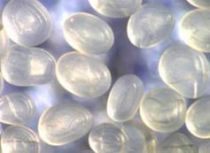System for the elimination and collection of substances in wastewater
2012-0619-02

- researcher's name
-
about researcher HIRASAWA, Izumi Professor (retired)
- affiliation
-
Faculty of Science and Engineering School of Advanced Science and Engineering
- keyword
-
background
Water management systems exist for the construction of pleasant water environments, but there are few processes that consider the treatment of the solid matter created through the disposal process. In addition, in consideration of resource limitations, there is a need for the construction of a waste water treatment system that incorporates the collection and recovery of substances.
summary
This project uses crystallization phenomena for a system that disposes of and collects the targeted substances in a discriminating and safe way while making considerations for the characteristics of waste water, in that it has a low concentration of many materials.
application/development
●Disposal and collection of phosphate ions within domestic wastewater, including sewage, and wastewater from processes related to agriculture (collected substances: ammonium magnesium phosphate, calcium phosphate, etc.)
●Collection of fluorine from fluorinated industrial wastewater (collected substances: calcium fluoride).
●Collection of metallic ions from nickel plate waste liquid and other liquids (collected substances: metal carboxylate, metallic sulfate, etc.)
In addition to the above, it is possible to separate the targeted substances from boric acid, arsenic, and waste materials.
predominance
Because crystallization phenomena is used, it is possible to collect targeted substances in a more discreet way and in a more purified crystalline form compared to precipitation.
In addition, collection is simple because the collected crystals are as large as a few millimeters.
Furthermore, the project is producing findings that can even be applied to the production of food and medical products, the control of crystalline structures, and other fields.
purpose of providing seeds
Sponsord research, Collaboration research
material
same researcher's seeds
-
 A latent heat storage system
A latent heat storage system
posted:
2014/05/21

